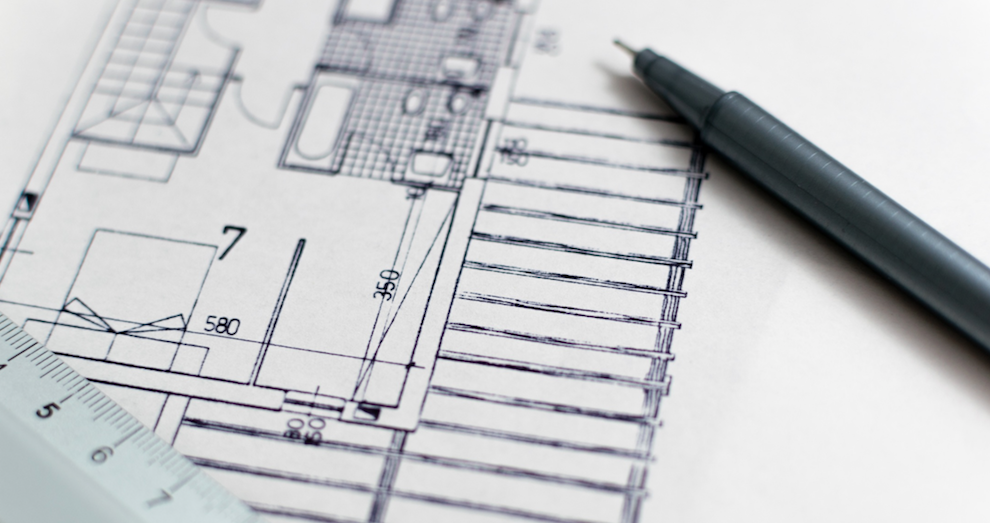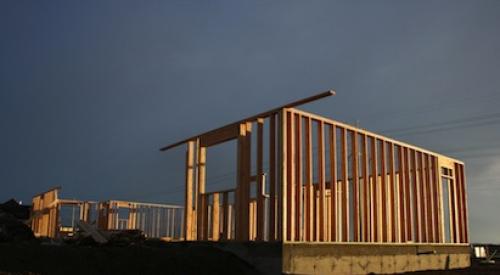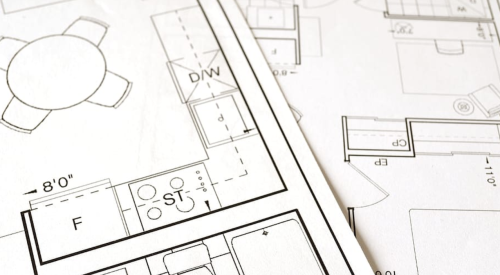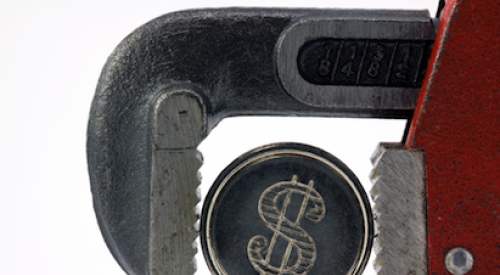I had been in home building all of six weeks when I observed my first value-engineering session in Chicago, 21 years ago. I knew what to expect, having read all about VA/VE, as it was known outside the building industry. The day prior, however, I received a wry look when I used the term "value analysis/value engineering" with the south side construction manager in charge. He smiled, looked over at the purchasing director and said, "Well, we just kind of skip that analysis stuff and go right to the engineering." That's called, "a clue."
I still recall a few of those cost-saving ideas, such as simplifying the overly complex trim on an elevation and eliminating unnecessary outlets in an upstairs hall. But the meeting's only participants were the construction manager, purchasing director, a few field superintendents and a draftsman. The south side construction manager had his agenda and did most of the talking. After the third time he dismissed someone's idea with, "We tried that five years ago and it didn't work," the rest of the group went silent and spent the remainder of the meeting just nodding in agreement.
Coincidentally, I had just finished reading "The Machine That Changed the World: The Story of Lean Production," given to me by a product manager friend from Ford. This seminal work on Lean operations described a method for generating product and process improvement that, while vaguely akin to what I watched with the builder that day, had evolved several generations. Two weeks later, I attended another VE session, this time with the construction manager from the north side, known for his different approach to things.
I arrived at a training room full of people and saw several sets of plans spread across big tables. The purchasing director and draftsman were there again, with the requisite field supers. Also participating were the foundation contractor, framers, plumbers, electricians and HVAC trades, including field crews. The north side manager then declared, "Let's start with the 2305 model," and everyone gathered around the first big table. I watched, fascinated, as a near free-for-all broke out as various trades pointed out errors, omissions and improvements to be made. Along with product considerations, issues also arose regarding process and communication that could save money for both the builder and the trade. Many notes were scribbled around the edges of the plans, but in no systematic way.
The key word in value engineering is value, obviously. The key words for Lean are value and waste.
As messy as the second VE event was, I was impressed with both the number and potential of the ideas that emerged. The north side manager never shut down a discussion, and when the purchasing manager started down the "been there, done that, didn't work" path, the construction manager cut him off and turned to the trade with, "Tell us more about your idea." After four hours, everyone was exhausted, but the results were remarkable. They replaced some expensive non-structural columns with a PVC pipe at half the price - and improved the look. They saved 2 yards of concrete per unit by changing the way they did wing-walls supporting porches, which solved a costly warranty problem. They changed the schedule and order of the mechanicals, saving a trip and making it easier for everyone. Senior management was impressed with the money saved and how doors were opened, allowing communication to flow. That day the seed was planted, and it was clear that such a process, well-structured and systematized, would produce astounding results.
Being new to the industry, I expected to find similar work as I toured my employer's operations across the country, but I was wrong. During my eight years with the national builder and for my first 10 as a consultant, I met only a handful of operations doing anything close to the unorganized, yet effective process described above. Builders were too busy getting that next house built for a waiting customer. Besides, the great majority of profit was made on land appreciation, price inflation and volume expansion, not the house itself. That, of course, all changed as the scare of '06 became the crash of '07 and the debacle of '08. It has been a devastating time for home building. Ironically, though, this disaster became the driving force for industry-changing processes, because builders are now forced to make a profit on the house itself.
During the past four years, much cost-reduction activity has worn the VE label, and it has resembled more the south side manager's approach than that of the north. Even as good as the north side manager was, no one was there from the lumber company; no one from service who could speak to the impact of every decision after closing; no one from sales, with an understanding of how changes could affect customer perception of value. There was no process to get everything down and track it to support implementation. And, as the south side manager bragged, there was little analysis to go with the engineering. Lean has changed that forever, but let's start with some basics.
Value + Waste (the Key Words for Lean)
The key word in value engineering is value, obviously. The key words for Lean are value and waste. If you Google "Lean process" you'll receive a million hits and an array of definitions. The simplest one is: Lean is the relentless pursuit, identification and removal of waste from product and process; waste is anything that does not add value. Value is defined by a simple equation: value = function/cost. There are five versions of the equation that result in increased value to the customer:
1. Function Steady + Cost Decrease (universal strategy). Example: Change countertop brand; performs and looks just as good as previous brand; costs 10 percent less.
2. Function Increase + Cost Steady (stable builder strategy). Change countertop brand; better scratch and stain resistance than previous brand; costs the same.
3. Large Function Increase + Small Cost Increase ("good times" strategy). Change countertop brand; better scratch and stain resistance; more colors, more style choices; 5 percent increase in cost.
4. Small Function Decrease + Large Cost Decrease ("hard times" strategy). Change countertop brand; fewer colors and styles than current brand; 20 percent decrease in cost.
5. Function Increase + Cost Decrease (perfect world strategy). Change countertop brand; better scratch and stain resistance; more colors; costs 10 percent less.
In this market, cost is such an overriding consideration that value engineering consists mostly of a combination of strategies #1 and #4. If cost doesn't decrease, few want to discuss even a significant increase in product function. Strategy #5, where function increases while cost decreases, is the ideal world, but it is comparatively rare in home building today. Some advanced framing techniques are good examples, where structure improves at lower cost.
Missing Elements From the Value Engineering Model
These value equations, understood and applied, would be nearly sufficient for value engineering to serve as the primary improvement tool for builders. Yet, as traditionally practiced, three key elements are missing for the VE model:
1. Analysis
When our south side friend bragged that he skipped the analysis part and went straight to engineering, he only guaranteed that his engineering would come up short. Analysis requires that component parts be broken down and examined using tools ranging from simple to sophisticated. The effect of changing one element must be weighed against the impact on others. When analysis is passed over, we wonder why improvement in one element creates so many problems in others. VE without VA is better left undone.
2. Process
Process can produce even more waste that product. A simple example is drywall. It is common to find $500 or more per unit by optimizing drywall sizes by room or area, and VE will find that. But a process issue such as getting installation crews to do closets and laundry rooms last instead of first results in another significant waste reduction. Lean's focus on waste reveals both product and process waste, whereas VE typically does not. For a more dramatic example, consider the average house today selling for $160,000. What one single element of the house could produce $10,000 in savings? Foundations? Framing? Flooring? None of the above. It's there, yet traditional value engineering will never find it. The answer is wasted or unnecessary trips to building sites. Examining the data from 55 Lean implementations involving more than 1,300 suppliers and trades, the numbers are stunning. There are at least 50 unnecessary trips to each building at an average cost of better than $200 per trip, totaling more than $10,000 per unit. Of course, 80-90 percent of this cost is absorbed by our suppliers and trades and never invoiced, thus we don't see it, we don't feel it, and we miss the waste and savings opportunity. But it's in the trades' overhead, and thus we pay. Meanwhile, most suppliers and trades simply accept it as part of the home building business. Process issues with plans, specifications, bidding, billing, PO's, VPO's, etc., usually go overlooked in VE. Lean, however, shines a bright light on them because anything that does not provide value is ferreted out.
3. Cost
Few in our industry understand cost as total cost, not merely initial price. Ask a builder team to list every cost aspect that goes into the cost of a house. In hundreds of exercises, builders typically produce 10 to 20 considerations. Give the same exercise to a group of suppliers and trades and they turn up 50 to 100 components of cost. Now ask how many elements of even your short list do you use to select and evaluate your own suppliers and trades. Shocking, isn't it? The next time you hear of a directive calling for re-bids in which the winner will always be the low bid, understand that this builder has assured himself that the lowest total cost will not be found. Ultimately, total cost is all that matters.
To determine total cost, take the bid price of the product itself, then consider the costs of design, bidding, schedule adherence, site cleanliness, trade interactions, rework, warranty, customer relations, quality perception, product development, training, site safety and risk. Risk? If builders don't know and maintain a three-year rolling average of their state workers' compensation "mod factor" for each trade contractor firm working on their sites, they are exposing themselves to huge cost and turning their back on the single best predictor available on trade quality and total cost. Virtually no one considers this or a host of other factors when calculating cost, thus leaving tremendous savings hidden away.
Value engineering, when combined with the critical element of value analysis, is a powerful component of the Lean building toolkit. Builders who embark on Lean, however, find that the focus on waste—the elimination of anything that does not provide value—opens them up to an even greater world of opportunity. They find that each person in each function, from construction to accounting, from sales to purchasing, from land development to the design center, can quickly identify waste if given a few simple tools. VE is nearly always conducted with a small group from construction and purchasing, perhaps including a few select trades. Lean, however, demands the input of everyone who touches the product, including, for example, the clerk who handles accounts payable, and thus has an innate knowledge of where waste lies in the system. Likewise, Lean calls for input from the layout man at the truss company, the estimator at the HVAC firm and the concrete truck driver. They all know where the waste is, but how many have ever been asked?
Stories, pictures and savings from waste are seductive, and I can offer hundreds of examples. Here are a few common examples:
Shoe molding. Ninety percent of shoe and quarter-round is for decoration or to cover up shoddy workmanship or bad design. People gasp when they hear this, but a top builder of luxury production homes completely eliminated shoe and no one knew the difference. They save money, their interiors look much cleaner and customers are happy.
Frieze board and eyebrow returns. Most of the country has gone frieze and eyebrow happy. There are two purposes for frieze board: decoration and to cover up bad workmanship. Occasionally, the decorative aspect works, but challenge yourself: Will the customer pay for it? Likewise, eyebrow returns have little purpose other than decoration, and combined with overly wide frieze they can severely clutter up an elevation, taking it right to the edge of kitsch. I recently watched an architect clean up such an elevation, removing excess eyebrows and eliminating frieze board. Even the builder's staff, who thought they had to have these trappings to sell homes sighed, "Ahh that's better."
Buried concrete. Concrete waste, both what is buried and what gets hauled to landfills, would be a national scandal if anyone understood the magnitude of the problem. Finding $1,000 per foundation - whether poured wall, block, monolithic or post-tension - is not unusual. Waste comes as excess piers, corners, beams, cables and boil-out under forms. Would customers willingly pay for this? Of course not.
The examples are endless.
Is Lean a Magic Bullet?
In 21 years working with more than 200 builders, it is the most powerful vehicle discovered yet to engage builders with their suppliers and trades to produce results that benefit everyone, including the customer. Value engineering rarely acknowledges savings to the supplier or trade, and that's an obstacle. Lean always does, and that is a primary reason for success.
In the end, what our industry needs is a culture change, a "hair on fire" attitude that every penny counts and every associate, whether manager, direct employee, supplier or trade, feels responsible. That's the challenge, and that's the goal. Getting there is not easy, but it has been done in many other industries. Now it's home building's turn at the plate, and not a moment too soon.













